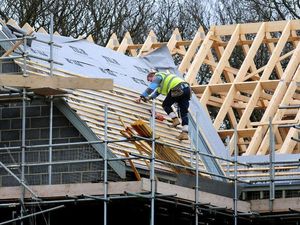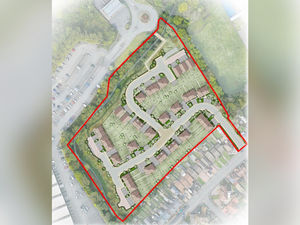Community leaders call for rural villages to be considered in future development plans for Stafford
Community leaders have called for rural villages to be considered in future development plans for Stafford borough.

More than 10,000 new homes are earmarked for the area during a 20-year period as part of Stafford Borough Council’s latest Local Plan.
The authority is publishing its “preferred options” for development of the borough between 2020 and 2040. A public consultation will launch on Monday, October 24 and close on December 12.
On October 4 and Thursday borough councillors considered the preferred options document and were told that the 10,700 new homes proposed included around 6,000 already granted permission or built.
A report to both meetings revealed that 59 per cent of new housing was proposed for Stafford, with seven per cent earmarked for Stone and 24 per cent planned as part of the new Meecebrook “garden village” near Eccleshall.
“Large villages” with at least 250 homes have been classed as “larger settlements” and are expected to have around four per cent of the housing allocation. These include Barlaston, Eccleshall, Gnosall, Hixon, Weston, Yarnfield, Woodseaves, Colwich and the Haywoods.
Less than one per cent of housing is set to be built in “smaller settlemments of between 50 and 259 homes. These include Brocton, Church Eaton, Creswell, Derrington, Hilderstone, Great Bridgeford, Seighford, Swynnerton and Tittensor
At Thursday’s cabinet meeting members raised concerns about the future of Stafford Borough’s rural areas if new development was restricted there. Councillor Mark Winnington, cabinet member for environment, said: “I have a concern and I’ve had it for several years that some of the smaller and medium-sized villages are dying on their feet.
“We can all recount shops, pubs, schools, churches are in a bad place at the moment – and if we completely stop development in these smaller villages we are slowly suffocating them to death. We’re stopping local people being able to afford some smaller housing and I feel we need to make sure that if there is a feeling within a locality that they want to have one or two houses we should make sure that the Local Plan doesn’t stifle that.
“The younger generation want to work locally, we want to increase economic growth within the rural areas and Stafford Borough is a largely rural area. We have got to allow some flexibility in terms of provision of housing and some flexibility in terms of economic activity, even if it’s just small enterprise centres.
“We want to provide that growth and we have got to look after our rural areas. Let them grow organically – but local people have to be on board.”
Councillor Mike Smith, cabinet member for resources, said: “We talk about the hierarchy and small settlements and I wondered why they were in there when we’re not intending to build in the smaller settlements. The only houses that will be approved in those are barn conversions I take it, which is no different from the situation now.
“I was heavily involved in trying to get a Neighbourhood Plan in High Offley Parish, which comprises Woodseaves which is a Key Service Village. We put forward plans for houses in the area and the inspector threw it out – and that really grates with people in Woodseaves.”
Councillor Frances Beatty, cabinet member for economic development and planning, replied: “One or two of them have got Neighbourhood Plans in process, and where they are putting forward their own Neighbourhood Plans they may want to see some small-scale development. It’s not in our interest to prevent or stifle all kinds of development in every kind of village; it’s not wise and I suspect probably not legal either.
“We are also waiting for possible new planning legislation and the officers are working in quite difficult circumstances because we’ve seen a Planning Bill, we don’t know what part of it’s going to come forward, when it’s going to come forward or if it’s going to come forward. We very much took the view that we’re going to carry on and we may have to make adjustments.
“When anybody’s looking at this plan we need to look at what it is going to be like in 20 years’ time. It’s very easy to look at the situation as it is now.
“Talking about rural villages, we now have access to broadband that wasn’t there before and people can work from home in the villages. I would like to see that that brings back the opportunity for village shops and so forth.
“The idea that you can’t have a small village having any development because there isn’t a bus service – perhaps that doesn’t apply in the future because people will be working from home in a way they didn’t before. The transport services will change and use of electric vehicles; all of these are factors we need to build into this document.”




